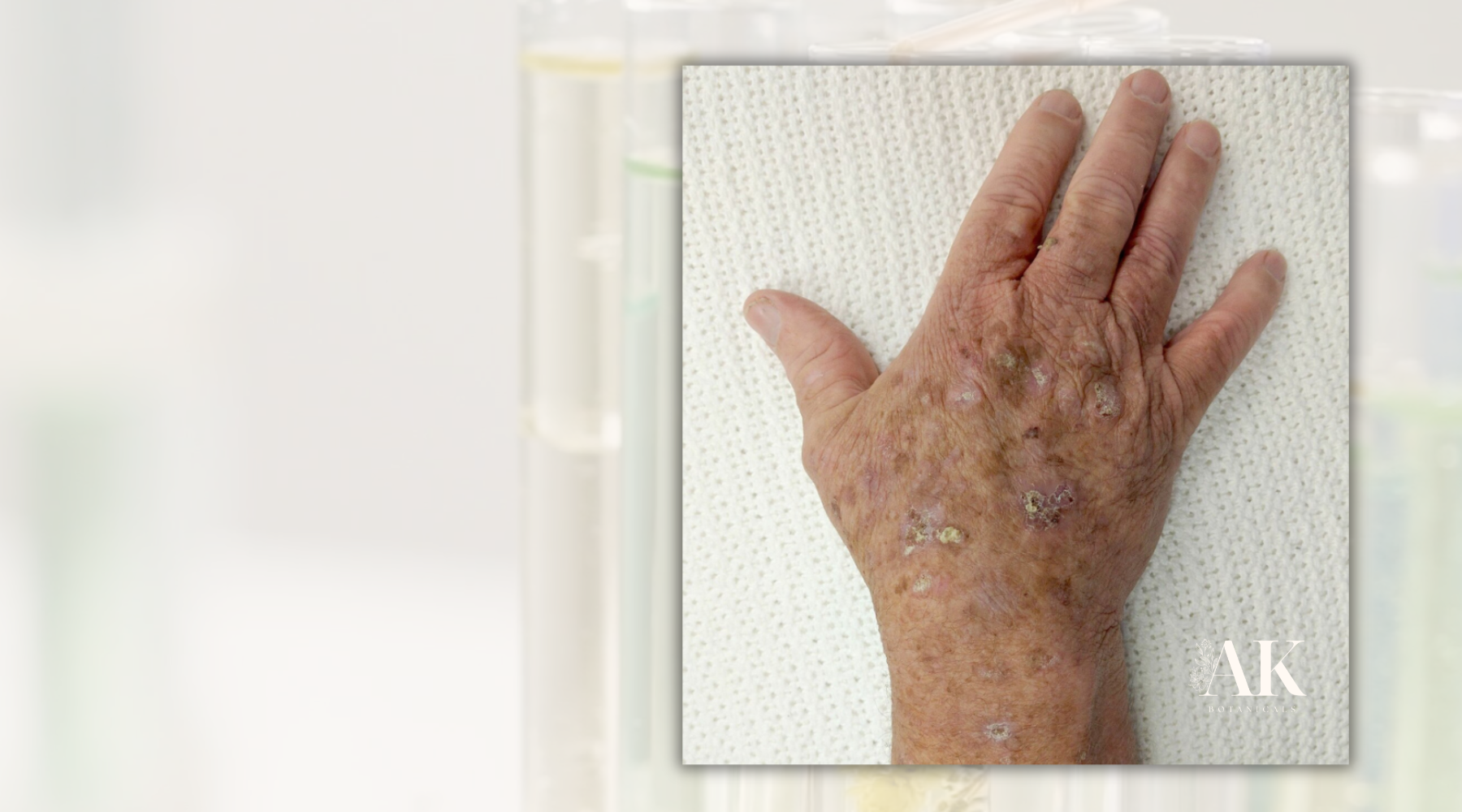
Understanding Actinic and Solar Keratosis: Causes, Symptoms, and Treatments
Embracing the warmth of the sun can be a joyful experience, but for many, it can also lead to skin conditions that may not be widely understood. Actinic and solar keratosis are two such conditions, and understanding them is vital, especially for those who spend significant time basking in the sun’s rays. Both conditions arise from prolonged exposure to ultraviolet (UV) light and, while they may appear as minor skin issues, they can be precursors to more serious health concerns, including skin cancer.
Understanding Actinic and Solar Keratosis and Why it’s essential to recognize and address Actinic and Solar Keratosis.
Actinic keratosis, often referred to as solar keratosis, presents as rough, scaly patches on the skin that develop over years of sun exposure. These patches are most commonly found on sun-exposed areas, including the face, ears, neck, scalp, chest, backs of the hands, forearms, and lips.
These growths are considered precancerous, possessing the potential to evolve into squamous cell carcinoma, a prevalent type of skin cancer. Recognizing and treating actinic keratosis early is a compassionate act toward your skin’s health, preventing it from progressing into something more serious.
Actinic and Solar Keratosis Causes
The primary driver behind actinic keratosis and solar keratosis is chronic exposure to UV rays from both the sun and artificial sources like tanning beds. Certain factors heighten the risk of developing actinic keratosis and similar skin conditions:
- Fair Skin: Individuals with lighter skin, hair, and eyes possess less melanin, making them more vulnerable to UV damage and increasing their susceptibility to actinic keratosis.
- Age: Actinic keratosis tends to manifest more frequently in individuals over 40, as the accumulation of sun damage unfolds over time.
- Geography: Living closer to the equator or at higher altitudes exposes individuals to more intense sunlight, increasing the likelihood of actinic keratosis.
- Occupation: Jobs that require long hours outdoors, such as farming or construction, elevate the risk of developing lesions like actinic keratosis.
- Immune System Suppression: Those with weakened immune systems, like organ transplant recipients, face a higher risk of actinic keratosis due to reduced ability to repair UV-induced damage.
Actinic and Solar Keratosis Symptoms
Actinic and Solar Keratosis Symptoms can present with a range of signs and indicators. Common actinic and solar keratosis symptoms include:
- Rough Texture: The affected skin may feel dry, rough, or sandpaper-like, a hallmark of actinic keratosis.
- Color Changes: Patches can appear red, brown, or flesh-colored, often standing out against the surrounding skin, indicative of actinic and solar keratosis symptoms.
- Size and Shape: These lesions can vary in size, from as small as a pinhead to as large as a coin, typically appearing flat or slightly raised.
- Tenderness: Some individuals may experience itching, burning, or tenderness in the affected area, which are notable symptoms of actinic and solar keratosis.
- Crusting or Scaling: Patches may develop a hard crust or scaly surface that can peel off and then reform, a common presentation of actinic keratosis.
It's essential to remain vigilant for actinic and solar keratosis symptoms, as they may not be immediately noticeable, particularly in smaller or less visible areas.
Actinic and Solar Keratosis Treatments
Addressing actinic keratosis is not only important for cosmetic reasons but also crucial in preventing potential progression to skin cancer. Several nurturing treatment options are available:
- AKti-Clear for Actinic and Solar Keratosis Treatment: Our natural treatment harnesses the power of botanical ingredients known for their skin-healing properties. AKti-Clear works gently to support the skin’s natural regeneration, helping to reduce the appearance of actinic and solar keratosis while promoting a clearer complexion.
- Topical Medications for Actinic and Solar Keratosis Treatment:: Creams, gels, and ointments containing ingredients such as 5-fluorouracil, imiquimod, or diclofenac can be lovingly applied to affected areas to help destroy abnormal cells.
- Cryotherapy for Actinic and Solar Keratosis Treatment:: This method involves freezing the lesions with liquid nitrogen, allowing them to peel away as the skin heals.
- Photodynamic Therapy (PDT) for Actinic and Solar Keratosis Treatment:: A combination of a light-sensitizing agent and light exposure works together to destroy abnormal cells.
- Chemical Peels for Actinic and Solar Keratosis Treatment:: A gentle chemical solution is applied to the skin, causing the top layers to peel away and remove damaged cells.
- Laser Therapy for Actinic and Solar Keratosis Treatment:: High-intensity light beams target and eliminate lesions, fostering healthier skin.
- Curettage and Electrosurgery for Actinic and Solar Keratosis Treatment: The lesion is scraped off using a curette, and the area is treated with an electric needle to eliminate any remaining abnormal cells.
Actinic and Solar Keratosis Prevention
Preventing actinic keratosis involves nurturing your skin with protective practices against UV exposure:
- Use Sunscreen to help prevent actinic keratosis : A broad-spectrum sunscreen with at least SPF 30 should be part of your daily routine, even on cloudy days or during winter.
- Wear Protective Clothing: Long sleeves, wide-brimmed hats, and sunglasses serve as loving shields for your skin.
- Seek Shade: Avoid the sun’s rays during peak hours (10 a.m. to 4 p.m.) to give your skin a much-needed break from intense UV exposure.
- Avoid Tanning Beds: Artificial UV rays from tanning beds can be just as harmful as the sun’s rays.
Actinic and solar keratosis may seem like minor inconveniences, but they warrant your attention and care. By understanding their causes, recognizing the symptoms, and seeking appropriate treatment, you can protect your skin and reduce the risk of developing skin cancer. If you notice any unusual changes in your skin—especially if you’re at higher risk—don’t hesitate to consult a dermatologist. Early intervention is a loving commitment to maintaining healthy skin and preventing more serious complications.




